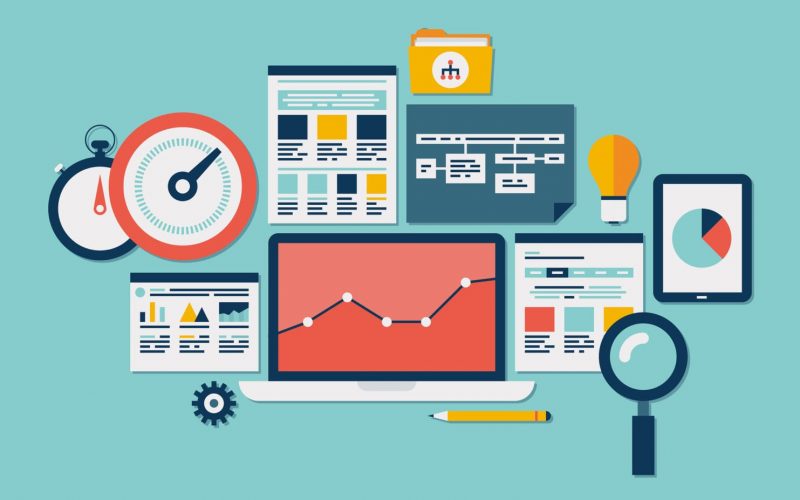When I initially began exploring the realm of digital marketing, I was eager to learn the methods that would propel my campaigns to the next level. I frequently wondered what major brands did differently to achieve such extraordinary success. It wasn’t until I began working closely with industry experts and reviewing top-performing campaigns that I discovered some of the hidden secrets that drove their success. In this article, I’ll share these findings with you, along with some concrete advice and real-world examples to help you enhance your campaign optimization efforts.
What is Campaign Optimization?
Campaign optimization is the process of constantly reviewing and enhancing your marketing efforts to achieve better performance and higher ROI. This entails adjusting components such as targeting, ad creatives, bidding tactics, and landing pages based on data.
Understanding the Importance of Campaign Optimization
Before we get into the details, it’s critical to understand why campaign optimization is so important. HubSpot found that organizations that optimize their marketing initiatives receive an average 20% increase in conversion rates. This number alone demonstrates the significance of always tweaking your methods to stay ahead of the competition.
Key Takeaways
- Data-driven decision-making is critical for determining what works and does not in your campaigns.
- A/B testing allows you to identify the best mix of elements for improved performance.
- Personalization improves client engagement and loyalty.
- Leveraging client feedback allows you to fine-tune your tactics and improve the customer experience.
- Cross-channel integration creates a consistent and smooth client experience.
Campaign Optimization Secrets That Big Brands Don’t Want You To Know
Secret #1: Data-Driven Decision Making
Big brands rely significantly on data to inform their decisions. They employ advanced analytics tools to monitor all aspects of their campaigns, including click-through rates (CTR), conversion rates, and customer lifetime value (CLV). They can detect what’s working and what’s not by analyzing data, allowing them to make informed modifications.
Example: During a given time of day, a renowned e-commerce firm noticed a reduction in conversion rates. Analyzing their data revealed that their target audience was more engaged in the evening. They changed their ad timing accordingly, resulting in a 15% improvement in conversion rates.
Secret #2: A/B testing
A/B testing is a key component of campaign optimization. It entails testing two versions of an ad, landing page, or email to see which performs best. Big brands are always exploring different aspects to find the best combination that connects with their target audience.
Example: Netflix is well-known for its thorough A/B testing processes. They test everything, from the visuals and text on their landing pages to the sequence in which TV episodes and movies appear to consumers. This thorough approach enables them to maximize user engagement and retention.
Secret #3: Personalization
Personalization extends beyond simply addressing the customer by their first name. It entails personalizing content, offers, and suggestions depending on user preferences and habits. Big brands utilize complex algorithms and machine learning to provide highly tailored experiences.
Example: Amazon excels in customization. They deliver individualized product recommendations based on clients’ browsing and purchasing patterns, which greatly increases sales and customer loyalty.
Secret #4. Leveraging Customer Feedback
Big brands aggressively seek out and respond to customer input. They employ surveys, reviews, and social media interactions to learn about customer preferences and pain concerns. This feedback is then used to fine-tune their marketing and enhance the overall consumer experience.
Example: Starbucks routinely uses user feedback to innovate and improve their products. Customer recommendations and input are frequently used to develop seasonal cocktails and new menu items.
Secret #5. Cross-Channel Integration
Successful brands ensure that their marketing campaigns are consistent across all media. This entails merging their tactics for social media, email marketing, search engine marketing (SEM), and content marketing to provide a unified customer experience.
Example: Coca-Cola’s “Share a Coke” campaign is an excellent illustration of cross-channel integration. The campaign combined personalized Coke bottles, social media sharing, and user-generated material to create an unforgettable and engaging experience.
Secret #6. Use Advanced Tools and Technology
Big brands invest in cutting-edge marketing strategies and technologies to acquire a competitive advantage. These tools allow them to automate operations, obtain deeper insights, and carry out more complex initiatives.
Example: Nike uses powerful AI and machine learning capabilities to evaluate customer data and forecast trends. This allows them to remain ahead of the competition and focus their marketing efforts more efficiently.
Secret #7. Focusing on Mobile Optimization
With the bulk of consumers accessing information via mobile devices, optimizing advertising for mobile is essential. Big brands make ensuring their websites, advertisements, and emails are mobile-friendly to deliver a consistent experience.
Example: According to Google, 61% of visitors are unlikely to return to a mobile site that they had difficulty accessing, while 40% visit a competitor’s site instead. This emphasizes the importance of mobile optimization for customer retention and conversion.
Secret #8. Remarketing Strategies
Remarketing is the process of targeting customers who previously interacted with your brand but did not convert. Big brands employ sophisticated remarketing methods to re-engage these users and persuade them to complete their transactions.
Example: Booking.com uses remarketing to target visitors who have browsed for lodgings but have not made a reservation. They send targeted emails and display adverts based on the properties the user browsed, boosting the likelihood of conversion.
BestPractices For Campaign Optimization
- Choose the appropriate goals and measurements.
- Align strategy with the consumer journey.
- Diversify your techniques, outlets, and media types.
- Use the correct tools.
- Monitor campaign performance.
Ad campaign optimization requires meticulous planning, measurement, and data analysis. These best practices can allow you to simplify the procedure and improve your results.
#1. Choose the appropriate goals and measurements
Campaign optimization begins with determining the appropriate campaign goal and accompanying KPI. Good campaign goals help to achieve bigger business and marketing goals.
For example, a marketing team may optimize a digital ad campaign for website traffic to assist the company’s overall goal of increasing brand awareness.
Once you’ve determined a campaign goal, the next step is to choose the metrics that will characterize campaign success. A campaign attempting to boost relevant traffic to its website may measure total site visits and click-through rate (CTR), whereas one aimed at maximizing conversions may measure total conversions, conversion rate, total leads created, and clicks through to advertising landing pages.
#2. Align strategy with the consumer journey
Effective ad campaigns focus on the customer’s buying journey, which refers to the actions prospects take before and during conversion. The customer journey (or buyer journey) is typically separated into three stages: awareness, deliberation, and decision.
- The awareness phase is when a new lead learns about your brand. Use this level of the funnel to create leads.
- Consideration is the phase in which a lead learns more about your company and begins to form an opinion about your products or services. Target this funnel stage to boost brand reputation and raise the likelihood of a sale.
- The decision is made when the lead makes a purchase and becomes a paying customer. Target this segment of the funnel to increase sales.
Customers at different points of the journey have varied needs, so different sorts of ad content may be required. Understanding which stage of the trip you’re targeting will help you set objectives and fine-tune your ad approach.
#3. Diversify your techniques, outlets, and media types
Ad campaign optimization also entails sharing interesting content across several channels. On the Shopify Masters podcast, Artem Kuzmichev and Richard Mabley, the owners of Transformer Table, discussed the necessity of a diverse advertising strategy.
“Diversification obviously is also key to any business really, but especially in ecommerce,” Artem explains. “We’re still getting great results with Meta advertising, but what if Facebook doesn’t exist anymore? Diversify into different outlets.
Diversification can expand your overall reach and allow you to make adjustments based on solid data about how each media type, approach, or channel performs. Here’s an overview of diversification strategies:
- Use several channels: Many advertisers run a single campaign across several channels, such as ads on various social media sites or podcasts, radio, and video platforms. Running good multichannel campaigns can enhance your total reach and allow you to interact with different segments of your target audience who may be active on multiple platforms.
- Use various media formats: Multimedia planning entails developing content utilizing a variety of media formats, including images, text, audio, and video. This method can help you boost the likelihood that your target audiences receive impressions in their preferred format.
- Diversify your tactics: In addition to varying channels and media kinds, you may also vary strategies within channels. For example, you might use Google Ads to run retargeting ads (ads that target visitors to your website), search advertisements (ads that appear in search engine results), and PPC (pay-per-click) ads, extending your overall reach and providing vital performance data for comparison.
#4. Use the correct tools
The correct tools can help you optimize your digital ad efforts. For example, adopting a single product catalog for all of your advertising activities will help you manage product inventories and track visitors to your online store. Some campaign management software can also help you organize and store media assets, as well as perform campaign analysis.
#5. Monitor campaign performance
Ongoing performance tracking is an essential component of advertising campaign optimization. Prepare a performance-tracking strategy for each technique and channel. In digital campaigns, Google Analytics is frequently used to track critical website performance indicators such as total website visits, bounce rates, and top traffic sources.
It also entails reviewing campaign data provided by certain ad platforms or vendors. Google Ads, for example, provides an ad quality score as well as information such as impressions, conversions, and cost per click.
When you have enough data, conduct a formal review of your campaign’s performance. Consider conducting reviews during and after each campaign run. Mid-campaign reviews allow you to make adjustments to active campaigns, while post-campaign reviews allow you to consolidate data, compare results to previous campaigns, and acquire useful insights to influence future optimization efforts.
Benefits of Campaign Optimization
- Better performance tracking.
- improved campaign performance.
- Higher return on investment.
- Long-term business development
Optimizing your advertising techniques will help you increase profitability and achieve your long-term business objectives. Here is a summary of the benefits:
#1. Better performance tracking
Ad optimization entails defining a precise goal for each ad campaign your organization runs, as well as key performance indicators (KPIs) that correlate to campaign objectives.
For example, if you want to optimize your social media efforts for engagement, your KPIs could be the total number of engagements and the engagement rate. Linking each campaign to a specific optimization goal and KPI will help your team measure campaign performance, allowing you to make more educated budget allocation decisions across advertising projects.
improved campaign performance.
Campaign optimization enables you to alter your existing campaign strategy based on performance data and apply data-driven insights to future efforts. It can also help your marketing efforts.
Campaign optimization, for example, can assist you in identifying target keywords that resonate with your consumers, while conversion measurement can provide more detailed information about which phrases are most closely related to purchases. Marketing teams can then use this information to inform future advertising and marketing activities.
#2. Higher return on investment
Successful campaign optimization may help raise your brand’s exposure on search engines, reach a larger audience, and target potential customers based on their demand for a specific product or service, all of which can lead to increased conversions and ROI on your company’s advertising expenditure.
Campaign optimization also enhances your capacity to effectively monitor ROI, allowing you to make more informed ad spending decisions and improve overall performance.
#3. Long-term business development
Requiring advertising teams to set a clear aim for each campaign can also help you ensure that your ad strategies align with your company’s overall goals.
For example, you may optimize a digital campaign for both click-through rate (CTR) to support the broader company aim of generating brand awareness and conversion rate to support the goal of increasing sales.
How Can You Optimize an Underperforming Ad Campaign?
To optimize your ad campaign, first ensure that the metrics you’re utilizing are aligned with the campaign objectives. Diversify your channels, methods, and media types to determine which areas perform best. You can then reallocate your campaign spending to more effective techniques.
How Do You Evaluate and Optimize Campaign Performance?
Here’s how you can analyze and improve campaign performance:
- Collect campaign data.
- Determine whether channels, approaches, and individual ads are doing well or poorly.
- Reallocate the budget to more effective initiatives.
- Use performance data to improve low-performing advertising.
- Keep track of performance.
What are the Most Important KPIs To Look Out For In Campaign Optimization?
KPIs for ad campaigns include total impressions, total site visitors, click-through rate (CTR), engagement rate, and conversion rate.
Using a Campaign Optimization Template
A Campaign Optimization Template will help you streamline your campaign optimization efforts.
This template will assist you in systematically tracking, analyzing, and refining your campaigns, ensuring that you cover all important components required for success. By following the procedures described in the template, you can improve campaign performance and reach your marketing objectives more efficiently.
Conclusion
Mastering campaign optimization is essential for staying competitive in today’s fast-paced digital world. Data-driven decision-making, A/B testing, personalization, customer feedback, cross-channel integration, enhanced tools, mobile optimization, and remarketing tactics can all help you greatly boost campaign performance. Are you ready to take your marketing campaigns to the next level and achieve exceptional outcomes in 2024?
Related Articles
- Mobile Marketing Strategy Mistakes to Avoid and Best Practices
- VOICE SEARCH OPTIMIZATION: How To Optimize For Search Engines
- The 13 Landing Page Optimization Tools Experts Don’t Want You Using (Because They’re Too Effective)
- Backlink Outreach: Meaning, Types & How to Build a Successful One
- The Ultimate Guide to Improving Your Search Engine Positioning in 2024






